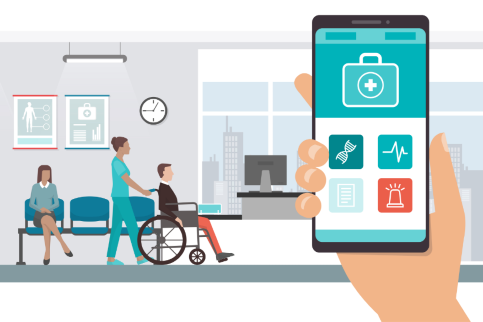Gaps in Facility-Based Healthcare
Aaliyah, 46, is a hard-working single mother who also cares for aging parents. Her blood pressure has been borderline in the past, but she hasn’t seen her doctor in five years.
Juan, 67, is a retired farmer with congestive heart failure. He knows he’s gained water weight lately but lives 40 miles from his family doctor’s office.
Haven, 31, desperately wants treatment for opioid use. Unfortunately, they experience panic attacks every time they leave home.
What do these patients have in common? All have been failed by our facility-based model of healthcare. None has the option of taking the afternoon off and driving across town to consult a physician. As a result, their treatable conditions go undiagnosed and unmanaged with devastating impact on their long-term health.
Meeting Patients Where, When, and How They Need Us
As recently as the 1940s, house calls represented 40% of physician visits. However, as hospitals, health systems, and medical groups established themselves, patient care shifted from the patient’s setting to the clinician’s. This setup is convenient for healthcare professionals. But for patients like Aaliyah, Juan, Haven, and their families, it can raise insurmountable barriers to wellness.
Health in Place is the unifying concept that the healthcare system should meet patients where, when, and how they need us. This new paradigm leverages technology, expanded care teams, and a consumer focus to extend care beyond the walls of our hospitals and medical offices. It demands that we redesign care models around patient needs to improve their health and quality of life.
Health in Place solutions also expand accessibility and equality in care delivery. By leveraging technology, rural hospitals can engage specialists to conduct patient visits remotely. Likewise, health systems can extend care to non-English-speaking patients and those in traditionally underserved communities.
Redesigning Care: Three Pillars
To meet patients where and when they need care, Health in Place is supported by three foundational pillars:
Care Without Boundaries. As healthcare becomes less linked to physical places, care delivery and the patient’s journey must be integrated, continuous, and equitable. It’s not enough to offer telehealth visits. Research suggests that over 40% of Medicare beneficiaries lack access to a home computer and high-speed internet connection. Health systems must therefore find sustainable ways to extend care to the most vulnerable, leveraging mobile care teams, telehealth kiosks, community partnerships, and more.
Patient-Centered Quality. To patients, quality means much more than turnaround times and readmission rates. Health is about being able to age at home, excel at work, and play pick-up basketball with the kids. It’s therefore essential that health systems measure success both on clinical outcomes and the quality of life that patients seek. This means concerning ourselves—perhaps for the first time—with the social barriers to care our patients face.
An Evolved Medical Team. A model that uses force-multiplying teams and technologies allows specialists to maximize their impact across care settings. For example, requiring a depressed patient to wait two months to see a psychiatrist for a simple medication adjustment is neither humane nor efficient. A more patient-centric approach would have the psychiatrist manage a patient cohort with hands-on support from nurses, behavioral health specialists, therapists, social workers, and others. Telehealth, remote monitoring, and mobile care teams could synergize this approach by streamlining communication and providing actionable, real-time health data.
Embodying Health in Place at Vituity
So why are we so passionate about Health in Place at Vituity? It’s because we see from the front lines how patient-centric care delivery allows us to truly serve as the bridge between patients and their health – tackling challenges that may not be strictly about medicine, but that also account for social services, mental health care, and family dynamics.
This commitment to designing care delivery around patients stretches back 50 years to our founding. From in-person physician care to AI-powered clinical chatbots, we deliver, support, and re-engineer care to meet patients when, where, and how they need us. Our culture of innovation is rooted in the deep clinical expertise of 5,000 practicing providers who deliver care every day — and are individually empowered to redesign care delivery systems.
My goal is for Vituity to be the clinical leader in this new Health in Place world, serving as the clinical engine making sure patients receive the care they need.
Learn more about the ways that Vituity is transforming healthcare delivery.
Originally published 7/29/2021
























